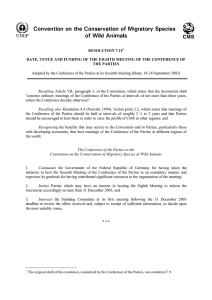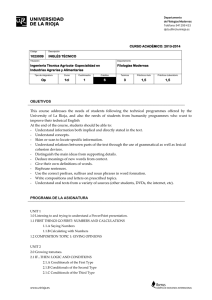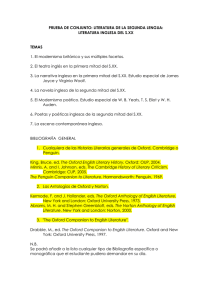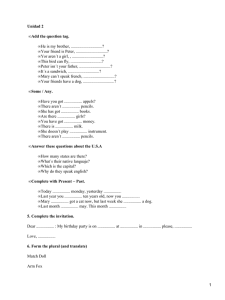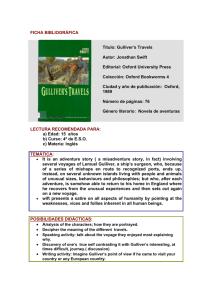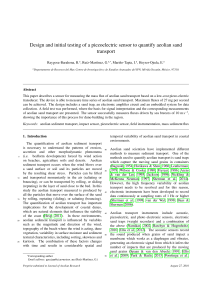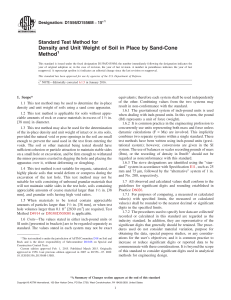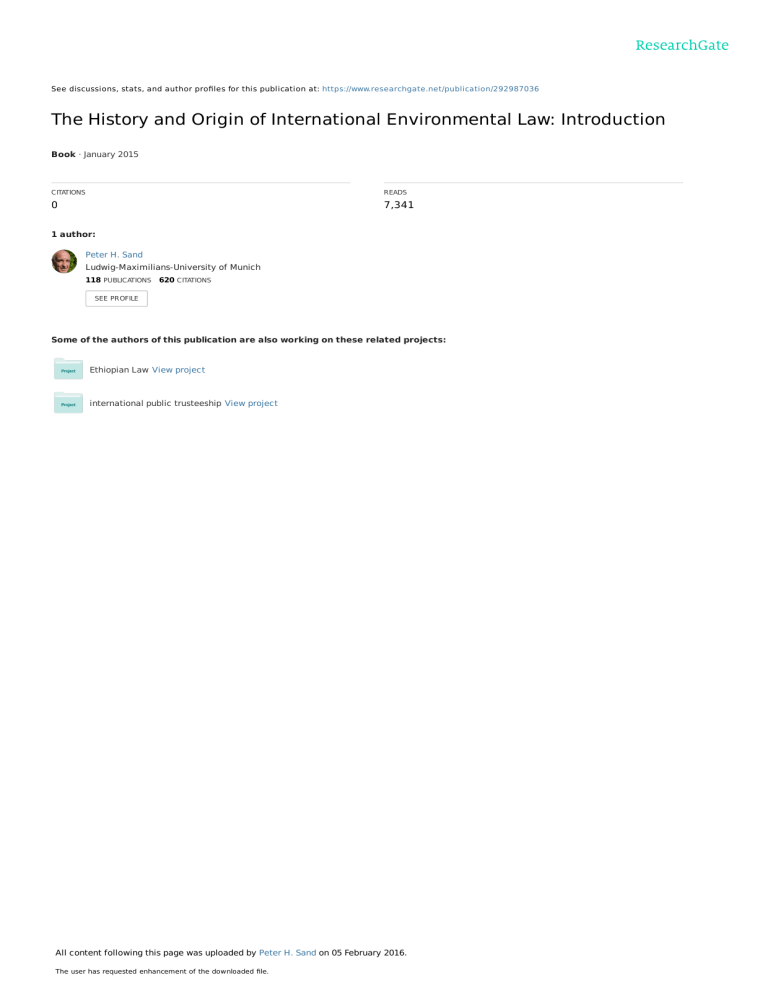
See discussions, stats, and author profiles for this publication at: https://www.researchgate.net/publication/292987036 The History and Origin of International Environmental Law: Introduction Book · January 2015 CITATIONS READS 0 7,341 1 author: Peter H. Sand Ludwig-Maximilians-University of Munich 118 PUBLICATIONS 620 CITATIONS SEE PROFILE Some of the authors of this publication are also working on these related projects: Ethiopian Law View project international public trusteeship View project All content following this page was uploaded by Peter H. Sand on 05 February 2016. The user has requested enhancement of the downloaded file. The History and Origin of International Environmental Law The International Library of Law and the Environment 1. The History and Origin of International Environmental Law Peter H. Sand Future titles will include: Environmental Constitutionalism James R. May and Erin Daly Environmental Law and Climate Change Jonathan Verschuuren Enforcement of Environmental Law Ludwig Krämer Wherever possible, the articles in these volumes have been reproduced as originally published using facsimile reproduction, inclusive of footnotes and pagination to facilitate ease of reference. For a list of all Edward Elgar published titles visit our website at www.e-elgar.com The History and Origin of International Environmental Law Edited by Peter H. Sand Lecturer in International Environmental Law Ludwig-Maximilians University, Germany THE INTERNATIONAL LIBRARY OF LAW AND THE ENVIRONMENT An Elgar Research Collection Cheltenham, UK • Northampton, MA, USA © Peter H. Sand 2015. For copyright of individual articles, please refer to the Acknowledgements. All rights reserved. No part of this publication may be reproduced, stored in a retrieval system, or transmitted in any form or by any means, electronic, mechanical or photocopying, recording, or otherwise without the prior permission of the publisher. Published by Edward Elgar Publishing Limited The Lypiatts 15 Lansdown Road Cheltenham Glos GL50 2JA UK Edward Elgar Publishing, Inc. William Pratt House 9 Dewey Court Northampton Massachusetts 01060 USA A catalogue record for this book is available from the British Library Library of Congress Control Number: ISBN 978 1 78347 566 7 Printed and bound in Great Britain by T.J. International Ltd, Padstow Contents Preface Acknowledgements List of Abbreviations Introduction Peter H. Sand vii ix xi xiii PART I THE TRADITIONAL ERA 1. Karl Neumeyer (1915), ‘A Contribution to International Water Law’ [‘Ein Beitrag zum Internationalen Wasserrecht’], in Festschrift für Georg Cohn, Zürich, Switzerland: Orell Füssli, 143–66, translated from the German by Peter H. Sand, 2014 3 2. Stephen C. McCaffrey (1993), ‘The Evolution of the Law of International Watercourses’, Austrian Journal of Public and International Law, 45, 87–111 14 3. Alfred P. Rubin (1971), ‘Pollution by Analogy: The Trail Smelter Arbitration’, Oregon Law Review, 50 (3), Spring, 259–82 39 4. Pat W. Birnie (1989), ‘International Legal Issues in the Management and Protection of the Whale: A Review of Four Decades of Experience’, Natural Resources Journal, 29 (4), Fall, 903–34 63 5. Robert L. Meyer (1976), ‘Travaux Preparatoires for the UNESCO World Heritage Convention’, Earth Law Journal, 2 (1), February, 45–81 95 6. Peter H. Sand (2001), ‘A Century of Green Lessons: The Contribution of Nature Conservation Regimes to Global Governance’, International Environmental Agreements: Politics, Law and Economics, 1 (1), January, 33–72 132 PART II THE MODERN ERA 7. Joseph L. Sax (1970), ‘The Public Trust Doctrine in Natural Resource Law: Effective Judicial Intervention’, Michigan Law Review, 68, January, 471–566 8. Christopher D. Stone (1972), ‘Should Trees Have Standing? – Toward Legal Rights for Natural Objects’, Southern California Law Review, 45, 450–501 9. Louis B. Sohn (1973), ‘The Stockholm Declaration on the Human Environment’, Harvard International Law Journal, 14, Summer, 423–515 10. Cyril de Klemm (1982), ‘Conservation of Species: The Need for a New Approach’, Environmental Policy and Law, 9 (4), December, 117–28 175 271 323 416 vi The History and Origin of International Environmental Law 11. Michael J. Glennon (1990), ‘Has International Law Failed the Elephant?’, American Journal of International Law, 84 (1), January, 1–43 12. Peter H. Sand (1991), ‘Lessons Learned in Global Environmental Governance’, Boston College Environmental Affairs Law Review, 18 (2), 213–77 THE POST-MODERN ERA 13. Edith Brown Weiss (1984), ‘The Planetary Trust: Conservation and Intergenerational Equity’, Ecology Law Quarterly, 11 (4), 495–581 14. Daniel Bodansky (1993), ‘The United Nations Framework Convention on Climate Change: A Commentary’, Yale Journal of International Law, 18, 451–558 15. Zygmunt J.B. Plater (1994), ‘From the Beginning, a Fundamental Shift of Paradigms: A Theory and Short History of Environmental Law’, Loyola of Los Angeles Law Review, 27, April, 981–1008 16. Kal Raustiala (1997), ‘The “Participatory Revolution” in International Environmental Law’, Harvard Environmental Law Review, 21, 537–86 17. Jonathan B. Wiener (2001), ‘Something Borrowed for Something Blue: Legal Transplants and the Evolution of Global Environmental Law’, Ecology Law Quarterly, 27 (4), 1295–371 18. Peter H. Sand (2011), ‘The Right to Know: Freedom of Environmental Information in Comparative and International Law’, Tulane Journal of International and Comparative Law, 20 (1), 203–32 428 471 PART III 539 626 734 762 812 889 Preface Courtesy of Peter F. Neumeyer Courtesy of Peter F. Neumeyer This book is dedicated to the memory of Karl Alexander Neumeyer (1869–1941), author of the first scholarly survey of international environmental law, published in 1922 as part of his monumental treatise on international administrative law.1 Professor Neumeyer taught international law – with a focus on history and conflict of laws – at the University of Munich (Germany) from 1910, until the Nazi regime forced him into retirement in 1934 and ultimately into suicide in 1941.2 Notes 1. Karl Neumeyer (1922), Internationales Verwaltungsrecht, Vol. 2 Part II (Munich: Schweitzer), Chapter 8 (pp. 1–135): Naturkräfte und Naturerzeugnisse [natural powers and products], including the transnational regulation of water and water power, mining, agriculture and forestry, hunting and fisheries. See also his pioneering early ‘Contribution to international water law’ (1915), infra Chapter 1 pp. 28–42. 2. Portrait (c. 1936) courtesy Peter F. Neumeyer. See the biography by Henriette von Breitenbuch (2013), Karl Neumeyer: Leben und Werk, 1869–1941 (Frankfurt: Lang) and commemorative notes by Hans J. Morgenthau (1941), American Journal of International Law, 35, 672; Hans Wehberg (1941), Die Friedenswarte, 41, 256–60; Max Gutzwiller (1947), Annuaire de l’Institut de Droit 1 International, 317–22; id. (1963), Rabels Zeitschrift für ausländisches und internationales Privatrecht, 27 (1963), 402–10; and Karl Vogel (1970), Archiv des öffentlichen Rechts, 95, 138–40; id. (2001), ‘Karl Neumeyer: In den Tod getrieben’, in Peter Landau and Hermann Nehlsen (eds), Grosse jüdische Gelehrte an der Münchener juristischen Fakultät (Ebelsbach: Aktiv, 2001), pp. 97– 111. Acknowledgements The editor and publishers wish to thank the authors and the following publishers who have kindly given permission for the use of copyright material. American Society of International Law via the Copyright Clearance Center’s RightsLink Service for article: Michael J. Glennon (1990), ‘Has International Law Failed the Elephant?’, American Journal of International Law, 84 (1), January, 1–43. Boston College Environmental Affairs Law Review for article: Peter H. Sand (1991), ‘Lessons Learned in Global Environmental Governance’, Boston College Environmental Affairs Law Review, 18 (2), 213–77. Harvard University Law School for articles: Louis B. Sohn (1973), ‘The Stockholm Declaration on the Human Environment’, Harvard International Law Journal, 14, Summer, 423–515; Kal Raustiala (1997), ‘The “Participatory Revolution” in International Environmental Law’, Harvard Environmental Law Review, 21, 537–86. IOS Press for article: Cyril de Klemm (1982), ‘Conservation of Species: The Need for a New Approach’, Environmental Policy and Law, 9 (4), December, 117–28. Stephen C. McCaffrey for his own article: (1993), ‘The Evolution of the Law of International Watercourses’, Austrian Journal of Public and International Law, 45, 87–111. Michigan Law Review for article: Joseph L. Sax (1970), ‘The Public Trust Doctrine in Natural Resource Law: Effective Judicial Intervention’, Michigan Law Review, 68, January, 471–566. Oregon Law Review for article: Alfred P. Rubin (1971), ‘Pollution by Analogy: The Trail Smelter Arbitration’, Oregon Law Review, 50 (3), Spring, 259–82. Orell Füssli Verlag for excerpt: Karl Neumeyer (1915), ‘A Contribution to International Water Law’ [‘Ein Beitrag zum Internationalen Wasserrecht’], in Festschrift für Georg Cohn, 143–66, translated from the German by Peter H. Sand, 2014. Zygmunt J.B. Plater and Loyola of Los Angeles Law Review for article: Zygmunt J.B. Plater (1994), ‘From the Beginning, a Fundamental Shift of Paradigms: A Theory and Short History of Environmental Law’, Loyola of Los Angeles Law Review, 27, April, 981–1008. Regents of the University of California for articles: Edith Brown Weiss (1984), ‘The Planetary Trust: Conservation and Intergenerational Equity’, Ecology Law Quarterly, 11 (4), 495–581; x The History and Origin of International Environmental Law Jonathan B. Wiener (2001), ‘Something Borrowed for Something Blue: Legal Transplants and the Evolution of Global Environmental Law’, Ecology Law Quarterly, 27 (4), 1295–371. Peter H. Sand for his own article: (2011), ‘The Right to Know: Freedom of Environmental Information in Comparative and International Law’, Tulane Journal of International and Comparative Law, 20 (1), 203–32. Southern California Law Review for article: Christopher D. Stone (1972), ‘Should Trees Have Standing? – Toward Legal Rights for Natural Objects’, Southern California Law Review, 45, 450–501. Springer Science and Business Media B.V. for article: Peter H. Sand (2001), ‘A Century of Green Lessons: The Contribution of Nature Conservation Regimes to Global Governance’, International Environmental Agreements: Politics, Law and Economics, 1 (1), January, 33– 72. University of New Mexico School of Law via the Copyright Clearance Center’s Rightslink Service for article: Pat W. Birnie (1989), ‘International Legal Issues in the Management and Protection of the Whale: A Review of Four Decades of Experience’, Natural Resources Journal, 29 (4), Fall, 903–34. Yale Journal of International Law for article: Daniel Bodansky (1993), ‘The United Nations Framework Convention on Climate Change: A Commentary’, Yale Journal of International Law, 18, 451–558. Every effort has been made to trace all the copyright holders but if any have been inadvertently overlooked the publishers will be pleased to make the necessary arrangement at the first opportunity. In addition the publishers wish to thank the Library of Indiana University at Bloomington, USA, for its assistance in obtaining these articles. List of Abbreviations CITES Convention on International Trade in Endangered Species of Wild Fauna and Flora CMS Convention on the Conservation of Migratory Species of Wild Animals CTS Consolidated Treaty Series IDI Annuaire Annuaire de l’Institut de Droit International IELR International Environmental Law Reports ILA Conference Reports Reports of the International Law Association Conferences ILC Yearbook Yearbook of the International Law Commission ILM International Legal Materials IPE International Protection of the Environment: Treaties and Related Documents LNTS League of Nations Treaty Series UNTS United Nations Treaty Series Introduction Peter H. Sand Narratives of the historical evolution of international environmental law generally distinguish three or four major ‘periods’ or ‘phases’:1 1. the ‘traditional era’ until about 1970 (i.e., preceding the 1972 United Nations Stockholm Conference on the Human Environment, UNCHE), which is sometimes sub-divided into a pre-1945 and a post-1945 period; 2. the formative ‘modern era’ from Stockholm to the 1992 United Nations Conference on Environment and Development (UNCED) in Rio de Janeiro; and 3. the ‘post-modern era’ from Rio onwards. It has rightly been pointed out, however, that the reality of international law is ‘historically and synchronically discontinuous’;2 that is, contemporary law typically reflects traditional, modern and post-modern elements alike. Even though it may be possible to put dates on the first international formulation of some environmental legal approaches, the bulk of law developed during earlier periods continues to be relevant simultaneously with new concepts today. Nor did the absence of specific environmental terminology during the so-called traditional era preclude the development of pertinent transboundary rules and legal regimes as far back as the fifteenth century. The collection of essays reproduced in the present volume is intended to illustrate the remarkable evolution of legal thinking within the time-frame so outlined. It cannot, of course, cover the full spectrum of writings relevant to this topic. Hopefully, though, it can point to some of the historical origins of concepts and ideas that tend to be taken for granted in our current environmental discourse. 1. The Traditional Era Natural resources management has been a subject of international law-making for well over five hundred years,3 starting with bilateral and regional regulatory agreements between states and dispute settlement arrangements over the shared utilization of watercourses,4 wildlife and fisheries in transboundary areas,5 and over the allocation and exploitation of ‘fugitive’ marine resources in areas outside national jurisdiction.6 What emerged during this period – especially under the label of ‘vicinage’ or ‘good neighbourliness’ law (bon voisinage, Nachbarschaftsrecht)7 – were typical territorial regimes of reciprocity, either between contiguous states or for the users of geographic areas designated as global commons. Hence standard international law textbooks continue to address environmental problems primarily under the doctrinal headings of territorial sovereignty and xiv The History and Origin of International Environmental Law ‘internationally used spaces and resources’.8 Among the most frequently cited examples of this classical approach are the arbitration awards in the 1893 Bering Sea Fur Seals case;9 the 1938–41 Trail Smelter case;10 and the 1957 Lake Lanoux case.11 Simultaneously, if less well publicized, a number of transnational disputes were resolved by domestic court decisions, under applicable rules of private international law (conflict of laws) or ‘international administrative law’.12 Examples include the 1939 Roya River case (transboundary water resources on the French–Italian border);13 the 1957 Poro case (trans-frontier air pollution on the French–German border);14 and the 1969 Salzburg Airport case (trans-frontier noise pollution on the Austrian–German border).15 On the other hand, conservation-minded ‘green’ policies began to make their appearance in treaty regimes from the middle of the nineteenth century onwards; for example, Article 22 of the 1856 Bayonne Boundary Treaty between France and Spain expressly aimed at ‘preventing destruction of the fishery’ in the Bidassoa River.16 These intergovernmental agreements echoed a transition in domestic laws from ‘single-use-oriented’ regimes to multiple use and ‘resource-oriented’ regulation of watercourses.17 And, even though the legal history of economic development is often associated with the unbridled over-exploitation of resources such as forests in Europe and North America,18 the history of conservation can also be traced back to enlightened legislative models such as Jean-Baptiste Colbert’s 1669 Ordonnance des eaux et forêts,19 which may in turn be seen as precursors of environmental law today.20 The initial policy motives for much of this law-making were downright utilitarian and selfserving – the avowed reason for Colbert’s forest legislation was to secure long-term timber supplies for French naval construction.21 ‘Anthropocentric’ lines of reasoning were prominent in early multilateral treaties, such as the 1900 London Convention Designed to Ensure the Conservation of Various Species of Wild Animals in Africa That Are Useful to Man or Inoffensive22 and the 1902 Paris Convention to Protect Birds Useful to Agriculture.23 The 1931, 1937 and 1946 International Conventions for the Regulation of Whaling24 primarily aimed at resource management for commercial uses;25 and the 1929 and 1951 International Plant Protection Conventions26 – like their ancestor, the 1878 Phylloxera Convention27 – were solely concerned with cultivated crops.28 Yet the twentieth century also marks the entry of genuine conservation ethics on the treaty agenda,29 reflecting new concerns of the international community for common natural heritage and for the prevention of global environmental risks: from President Theodore Roosevelt’s first (albeit abortive) attempt at convening an International Conservation Conference at The Hague in 190930 to the 1940 Washington Convention on Nature Protection and Wildlife Preservation in the Western Hemisphere;31 from the colonial powers’ 1933 London Convention Relative to the Preservation of Fauna and Flora in Their Natural State32 to the post-colonial 1968 African Convention on the Conservation of Nature and Natural Resources;33 and from the 1955 UN General Assembly Resolution establishing the Scientific Committee on the Effects of Atomic Radiation (UNSCEAR)34 to the 1963 Nuclear Test Ban Treaty.35 While pre-war efforts to translate these concerns into new intergovernmental institutions failed at the time,36 the non-governmental International Union for the Protection of Nature established in 1948 (renamed in 1956 the International Union for Protection of Nature and Natural Resources, IUCN) became an influential source of subsequent treaty initiatives.37 Joint initiatives with the United Nations Educational, Scientific and Cultural Organization (UNESCO), starting with a 1949 scientific conference,38 eventually led to the adoption of the The History and Origin of International Environmental Law xv 1971 Ramsar Convention on Wetlands of International Importance Especially as Waterfowl Habitat39 and the 1972 Paris Convention for the Protection of the World Cultural and Natural Heritage.40 The International Maritime Consultative Organization (IMCO, now IMO), which already dealt with risks to the marine environment under the 1954 International Convention for the Prevention of Pollution of the Sea by Oil,41 also assumed secretariat functions for the 1972 London Convention on the Prevention of Marine Pollution by Dumping of Wastes and Other Matter.42 Its global standard-setting in this field,43 together with that of several other UN specialized agencies and bodies entrusted with environment-related functions (including the Food and Agriculture Organization, International Atomic Energy Agency, International Labour Organization and World Health Organization in particular), further expanded the stock of sectoral international law and governance practice now available.44 2. The Modern Era The beginning of ‘modern’ international environmental law is usually dated to 5 June 1972, the opening day of the first UN Conference on the Human Environment in Stockholm, now annually celebrated as World Environment Day. In fact, the ‘Stockholm watershed’45 was the culmination of an intense preparatory process going back to two 1968 UN resolutions46 and must be seen in the context of several concurrent trends and discourses: • a global rise in environmental risks, highlighted by a series of eco-disasters starting with the 1967 Torrey Canyon accident (oil pollution in the North Sea) and the 1971 Minamata cases (river pollution by organo-mercury in Japan);47 • a growing public awareness of the world eco-crisis, alerted by media attention and by seminal publications, such as Rachel Carson’s 1962 Silent Spring, Max Nicholson’s 1969 Environmental Revolution and the Club of Rome’s 1972 Limits to Growth readily espoused by the civic protest movements of the 1960s and early 1970s;48 and • innovative examples of national legal responses to the environmental challenge, such as Japan’s 1967 Kogai Act, Sweden’s 1969 Miljöskyddslag and the 1970 National Environmental Policy Act, in conjunction with the judge-made ‘public trust doctrine’ in the United States.49 Even though the Stockholm Conference did not produce any instant treaty law, the United Nations Environment Programme (UNEP) established in its wake subsequently succeeded in initiating and negotiating no fewer than 48 multilateral conventions and protocols since 1976 – through diplomatic conferences convened under its auspices and, from 1982 onwards, in the context of a government-approved Programme for the Development and Periodic Review of Environmental Law (Montevideo Programme).50 At the same time, building on the historic 1972 Stockholm Declaration on the Human Environment,51 it promoted a novel type of consensual international law-making in the form of ‘soft law’.52 The new generation of legal instruments so emerging no longer fitted the territorially defined ‘Procrustean bed’ into which environmental issues had been forced before.53 The spectrum of international environmental relations had broadened well beyond the stereotype of ‘transboundary matters’ on the one hand and ‘governance of the commons’ on the other, to xvi The History and Origin of International Environmental Law match not only the growing environmental agenda of regional regimes,54 but also the growing catalogue of environmental problems that had once seemed local, yet had turned out to be globally shared.55 Accordingly, the scope and focus of international law-making shifted towards ‘functional’ regulation, depending on the ecosystems affected or the specific environmental risks addressed, and largely irrespective of traditional territorial limitations.56 2.1 Treaty Developments Compared to the traditional (pre-Stockholm) period, the number of multilateral environmental agreements more than doubled during the 20 years from Stockholm to Rio. The subject area of treaties expanded, from the classical risks of natural resource scarcity and extinction (addressed by the 1973 Convention on International Trade in Endangered Species of Wild Fauna and Flora57 and by the 1979 Convention on the Conservation of Migratory Species of Wild Animals)58 to the new man-made risks of industrial pollution and resource degradation by hazardous substances or activities (addressed by the 1985 Vienna Convention on the Protection of the Ozone Layer and its 1987 Montreal Protocol59 and by the 1989 Basel Convention on the Transboundary Movements of Hazardous Wastes and Their Disposal),60 sometimes through near-instant law-making, as in the case of the 1986 International Atomic Energy Agency conventions adopted in the wake of the Chernobyl nuclear radiation disaster.61 The pattern of treaty design shifted from ad hoc diplomatic conventions towards dynamic ‘framework’ regimes,62 open to future change by review and negotiation, with periodic adjustment by way of technical annexes and supplementary protocols.63 2.2 Developments in Dispute Settlement A similar focus on anthropogenic risks and flexible regulatory solutions is evident from the evolution of transnational environmental dispute settlement during this period, illustrated in the field of river pollution by the Rhinesalt cases (adjudicated as a matter of conflict of laws by the European Court of Justice in 1976 and by Dutch and French domestic high courts in 1983–90),64 and in the field of marine pollution by the 1978 Amoco Cadiz case (decided by a US federal court in 1992).65 Reflecting the ‘two-level games’ characteristic of this field, the Rhine chloride waste problem was eventually resolved by a cost-sharing scheme negotiated among the riparian states in 1991;66 whereas the bulk of claims for ship-based oil pollution has shifted away from liability suits to the industry-funded quasi-insurance scheme set up under the 1971 and 1992 International Oil Pollution Compensation Funds.67 Even though most multilateral environmental agreements now contain formal provisions for dispute settlement by recourse to international adjudication or arbitration, those clauses have rarely been used. Instead, several ‘modern’ treaties (starting with the 1990 Montreal Protocol Amendments)68 introduced new ‘non-adversarial’ procedures to ensure collective control of compliance.69 Environment-related disputes also became frequent topics for quasijudicial proceedings in the context of the General Agreement on Tariffs and Trade (GATT), starting with the Tuna–Dolphin cases in 1991;70 and the environmental damage caused by the 1990–91 Gulf War generated an unprecedented volume of state responsibility claims, ultimately settled by the UN Security Council’s Compensation Commission (UNCC).71 The History and Origin of International Environmental Law xvii 2.3 Developments in National Law Simultaneously, the Stockholm-to-Rio period witnessed an unprecedented wave of ‘horizontal diffusion’ of innovative environmental laws and policies,72 with a dual effect on international law. On the one hand, through a voluntary process of social learning and imitation sometimes referred to as mimesis,73 ‘legal formants’ or ‘memes’74 spreading across national and cultural boundaries produced a certain degree of convergence and harmonization that tended to facilitate consensus in treaty-making. Prime examples are the ‘environmental impact assessments’ (EIA), which originated in section 102(C) of the 1970 US National Environmental Policy Act (NEPA) and rapidly spread to more than 80 countries worldwide,75 and the ‘toxics release inventories’ (TRI), which in the wake of the 1984 Bhopal accident were first established under the 1986 US Emergency Planning and Community Right-to-Know Act and later replicated in numerous other parts of the world under EU, Organisation for Economic Cooperation and Development (OECD) and World Bank auspices.76 On the other hand, international environmental agreements also borrowed concepts and language from this partially harmonized core of domestic environmental law, thereby creating a ‘vertical transplant’ effect,77 as illustrated by the gradual globalization of the ‘precautionary principle/ approach’ through new treaty provisions and international case law.78 2.4 Development of International Environmental Law as a Discipline By 1990 at the latest, international environmental law had ‘emerged as a distinct academic discipline’, as acknowledged by the editors of the Harvard Law Review in a comprehensive assessment (editor-in-chief of the review at the time was a 29-year-old law student, Barack Obama).79 Indeed, the ‘greening’ of international law, politics and institutions had become something of a missionary goal and meta-narrative to an entire generation of committed environmental activists. Professional networks of ‘international environmental lawyers’ had thus come into existence,80 representing a new ‘epistemic community’.81 At the same time, voluntary international standardization and certification schemes (‘eco-labels’) to guarantee the environmental quality of products and services contributed to worldwide technical–legal harmonization.82 There now was a rush of initiatives for the codification of trans-sectoral environmental law ‘principles’ – including the 1974 OECD Principles concerning Transfrontier Pollution,83 the 1978 UNEP Principles for Shared Natural Resources,84 the 1982 World Charter for Nature initiated by IUCN,85 the 1982 Montreal Rules of International Law Applicable to Transfrontier Pollution adopted by the International Law Association (ILA)86 and the 1987 Legal Principles for Environmental Protection and Sustainable Development proposed by the Brundtland Commission in 1987.87 The UN International Law Commission (ILC) had begun to work on questions of responsibility and liability for environmental harm since 1978; 88 and in 1991, the Institut de Droit International (IDI) in turn embarked on the formulation of general rules applicable to the environment and to environmental damages.89 xviii The History and Origin of International Environmental Law 3. The Post-Modern Era Inevitably perhaps, the proliferation of new multilateral environmental instruments and norms also raised new questions and expressions of alarm over ‘treaty congestion’.90 The institutional structure for implementing the multitude of treaties was highly decentralized, consisting of a network of quasi-autonomous ‘conferences of the parties’,91 for the most part hosted by different existing international organizations and linked by inter-agency coordination arrangements.92 With the state of the world’s environment continuing to deteriorate, international environmental law as a grand narrative or ‘mobilizing myth’ risked suffering a loss of credibility – a symptom typical of post-modernity.93 Hence the focus of attention in preparations for the 1992 Rio Conference on Environment and Development (UNCED) shifted to the ‘effectiveness’ of the existing international legal instruments.94 While adding yet another layer of global treaties (the UN Framework Convention on Climate Change95 and the Convention on Biological Diversity)96 and environmental soft law (the Rio Declaration on Environment and Development97 and Agenda 21), UNCED also promoted synergies among conventions98 and a new trend towards pluralism at three distinct levels: • In the North–South context, the concept of ‘common but differentiated responsibilities’ acknowledged the breakdown of traditional egalitarian fictions and the emergence of a new legal polycentricity. It confirmed the differential treatment of developing countries on account of their special economic circumstances,99 but also in terms of a wider multicultural ‘universalization’ of international law,100 albeit at the price of asymmetry and fragmentation. • The inter-temporal ‘sustainable development’ concept confirmed the need to balance equitable interests between generations.101 The constraints thus imposed on present resource users for the benefit of previously unrepresented people yet unborn thus found their way into numerous Rio and post-Rio legal texts. At the same time, the concept represented another paradigm shift,102 from the old stereotype of a presumed ‘balance of nature’ (i.e., a stable equilibrium to be preserved against change) to a new ecology based on dynamic non-equilibrium that welcomes change.103 • Finally, the ‘participatory revolution’104 at Rio (with over 1400 non-governmental organizations registered as observers) prepared the ground not only for subsequent reforms in UN accreditation rules,105 but also for the ‘public–private partnerships’ later formalized at the 2002 Johannesburg Summit on Sustainable Development.106 It served as a powerful reminder of the legitimate claim of civil society to take part in international decision-making, which has since been recognized in a number of environment-related institutions admitting non-state actors to legal or quasi-legal proceedings: the World Bank Inspection Panel established in 1993,107 the Commission on Environmental Cooperation established in 1994 under the North American Free Trade Agreement,108 and especially the Compliance Committee established in 2002 under the 1998 Aarhus Convention on Access to Information, Public Participation in Decision-Making and Access to Justice in Environmental Matters.109 Far from signalling ‘the end of environmental law’,110 these developments reflect a new type The History and Origin of International Environmental Law xix of collective fiduciary accountability owed by all states for their proper management of environmental resources for the benefit of all people, present and future.111 Notes 1. 2. 3. 4. 5. 6. 7. 8. 9. 10. 11. 12. 13. 14. 15. 16. 17. 18. 19. 20. 21. 22. 23. 24. 25. 26. 27. 28. 29. 30. 31. 32. 33. 34. 35. 36. Fitzmaurice 2001:28; Kuokkanen 2002:xxvi; Sand 2007b:30; Beyerlin and Marauhn 2011:3; Sands and Peel 2012:22. Koskenniemi 1999:359. For a caveat on ‘conventional periodizations’ in the history of international law see Diggelmann 2012:1002. Neumeyer 1915:28, infra Chapter 1, traces sources back to a fifteenth century treaty for transboundary waters (based in turn on sixth century Roman law). The first British–Danish treaty on fishing rights in Icelandic waters was concluded at Westminster in 1489. McCaffrey 1993, infra Chapter 2. Barberis 1987:82, 86. Ciriacy-Wantrup 1968:306. Andrassy 1951; Thalmann 1951; Arnaud 1974. E.g., Jennings and Watts 1996:40; Dupuy and Kerbrat 2010:120, 807; Crawford 2012:333. USA v Great Britain, IELR 1:43. USA v Canada, IELR 1:231; Rubin 1971, infra Chapter 3. Spain v France, IELR 1:332. Neumeyer 1922, supra:3 / fn. 1; Neumeyer 1915:44, infra Chapter 1; von Bar 1997; Durner 2007:121. Société d’Energie Electrique du Littoral Méditerranéen v Compagnia Imprese Elettriche Liguri, judgment by the Italian Supreme Court (13 February 1939), English summary in Sand 1999:87. Poro v Houillères du Bassin de Lorraine, judgment by the Saarbrücken Court of Appeals (22 October 1957), English summary in Sand 1999:89. Township of Freilassing and Aicher v Federal Republic of Austria, judgment by the Austrian Administrative High Court (30 May 1969), English summary in Sand 1999:90. IPE 9:4319. Cano 1975:18. Hurst 1964. Trout 1978:149. Pinchot 1910; McManus 1999; Balogh 2002; Sand 2007a. Bamford 1956:21. CTS 188:418. CTS 191:91. LNTS 155:351; LNTS 190:79; UNTS 161:72, UNTS 338:336. Tønnessen and Johnsen 1982; Birnie 1990, infra Chapter 4. LNTS 126:305; UNTS 150:67. CTS 153:247. See Forster 1997. Gillespie 1997. See Ciriacy-Wantrup 1968:315. UNTS 161:193. LNTS 172:241; see Hayden 1942:59. UNTS 1001:4. UN General Assembly Resolution 913/10 of 3 December 1955; secretariat in Vienna, now part of the United Nations Environment Programme (UNEP). UNTS 480:43. The Act for the Foundation of an International Consultative Committee for the Protection of Nature, adopted by 17 states at Bern on 19 November 1913 (CTS 219:32), never entered into force; see Bowman et al. 2010:6. xx 37. 38. 39. 40. 41. 42. 43. 44. 45. 46. 47. 48. 49. 50. 51. 52. 53. 54. 55. 56. 57. 58. 59. 60. 61. 62. 63. 64. 65. 66. 67. 68. 69. 70. 71. 72. 73. 74. 75. 76. 77. 78. The History and Origin of International Environmental Law Boardman 1981:43; Holdgate 1999:113; Sand 2001:39, infra Chapter 6; Lausche 2008:53, 159. UNSCCUR 1950; see McCormick 1989:36. UNTS 996:245. UNTS 1037:151; see Meyer 1976, infra Chapter 5. UNTS 327:3. UNTS 1046:120; revised 1996. Mensah 1972. Contini and Sand 1972. Caldwell 1990:21. Resolution 1346 (XLV) of the UN Economic and Social Council of 30 July 1968, endorsed by UN General Assembly Resolution 2398 (XXIII) of 6 December 1968. M’Gonigle and Zacher 1979:143; George 2001. McCormick 1989:63. Sax 1970, infra Chapter 7; Stone 1972, infra Chapter 8. Currently Montevideo IV (for the decade 2010–20), adopted by Decision 25/11(1) of the UNEP Governing Council/Global Ministerial Environment Forum on 20 February 2009, Doc. UNEP/ GC/25/INF/15, Annex (2008); Johnson 2012:98. Sohn 1973, infra Chapter 9. Friedrich 2013. Vitzthum 2001:437. E.g., see Sand 1988. Russell and Landsberg 1972. Paulus 2004. In the view of Luhmann 1993:571, globalization is characterized by a shift from territorial to functional boundaries. CITES, UNTS 993:243; Glennon 1990, infra Chapter 11; Couzens 2014. CMS, UNTS 1651:356. UNTS 1513:293; UNTS 1522:3. UNTS 1673:57. UNTS 1439:275; UNTS 1457:133. See Gehring 1994. The prototype was the 1976 Barcelona Convention for the Protection of the Mediterranean Sea Against Pollution (UNTS 1102:27) and its protocols, which served as the design model for numerous subsequent treaties. See Sand 1991:242, 276, infra Chapter 12. See Sand 2012:190. See Shelton 1997:105. Additional Protocol to the 1976 Bonn Convention concerning the Protection of the Rhine against Pollution by Chlorides (UNTS 104:59), signed at Brussels on 25 September 1991 (UNTS 1840:423). See Dieperink 2011:150; and on the 2004 arbitration, Mcmahon 2008. UNTS 110:57; UNTS 1956:285; on the 2003/2005 supplementary funds, see Mensah 2012. UNTS 1589:469, Article 8 (implemented since 1992); see Széll 1998. See Klabbers 2007; Treves et al. 2009. Mexico v USA, ILM 30:1594. On this and the second tuna-dolphin case (EU v USA 1994, ILM 33:839), see Kingsbury 1994. On the subsequent shrimp-turtle cases (India et al. v USA 1998, ILM 37:834 and 38:121; Malaysia v USA 2001/2005, ILM 41:149), see Brunnée and Hey 1998, and Kelly 2005. See Sand 2011:167. Kern et al. 2001; Clark et al. 2001. Toynbee 1961:343. Sacco 1991; Blackmore 1999:4. Yeater and Kurukulasuriya 1995. Sand 2011:209, infra Chapter 18. Wiener 2001:1295, infra Chapter 17; Yang and Percival 2009:627. Sand 2000; Trouwborst 2002; Peel 2004; and more recently, the advisory opinion of the International Tribunal on the Law of the Sea (ITLOS) on responsibilities and obligations of states The History and Origin of International Environmental Law 79. 80. 81. 82. 83. 84. 85. 86. 87. 88. 89. 90. 91. 92. 93. 94. 95. 96. 97. 98. 99. 100. 101. 102. 103. 104. 105. 106. 107. 108. 109. 110. 111. xxi sponsoring persons and entities with respect to activities in the Area, ITLOS Case No. 17 (1 February 2011). Obama et al. 1991:1489; Schachter 1991. E.g., the IUCN World Commission on Environmental Law (established as ‘Committee on Legislation and Administration’ at Warsaw in 1960, <www.iucn.org/themes/law>); the International Council of Environmental Law (ICEL, established at New Delhi in 1969, <www.ic-e-l.org>); and the Environmental Law Alliance Worldwide (ELAW, established at Eugene/OR in 1989, <www.elaw.org>). Haas 1992. E.g., by the Forest Stewardship Council, the Marine Stewardship Council and the International Organization for Standardization (ISO); see Morrison and Roht-Arriaza 2007. ILM 14:242. ILM 17:1097. ILM 22:455. ILA Conference Report 60:1. WCED 1987:348. Resulting in the 2001 Draft Articles on the Responsibility of States for Internationally Wrongful Acts (ILC Yearbook II-2:26) and on the Prevention of Transboundary Harm from Hazardous Activities (ILC Yearbook II-2:146), and the 2006 Draft Articles on the Allocation of Loss in the Case of Transboundary Harm Arising Out of Hazardous Activities (ILC Yearbook II-2:59). Resulting in the 1997 IDI Strasbourg Resolutions on Environment; Procedures for the Adoption and Implementation of Rules in the Field of the Environment; and Responsibility and Liability under International Law for Environmental Damage; IDI Annuaire 67-II:477. Brown Weiss 1993:697; Anton 2013. Wiersema 2009. Chambers 2008. Lyotard 1984:xxiv. Sand 1992. UNTS 1771:107; see Bodansky 1993, infra Chapter 14. UNTS 1760:79. On its origins, see de Klemm 1982, infra Chapter 10 and McConnell 1996. ILM 31:874; see Viñuales 2015. Lenton 1997; Stendahl 2008; Herkenrath 2012. Honkonen 2009. Weeramantry 2004. Brown Weiss 1984, infra Chapter 13; Schrijver 2009. Plater 1994, infra Chapter 15. Tarlock 1994; Wiener 1995:334. Raustiala 1997, infra Chapter 16. UN Economic and Social Council Resolution 1996/31. Beisheim et al. 2010. Shihata 1994; van Putten 2008. Markell and Knox 2003. UNTS 2161:447; see Koester 2007. Farmer and Teubner 1994; Driesen 2003. Sand 2014; Wood 2014. References Andrassy, Juraj (1951), ‘Les relations internationales de voisinage’, Hague Academy of International Law: Recueil des Cours, 79, 77–181. Anton, Don (2013), ‘Treaty congestion in contemporary international environmental law’, in Shawkat Alam, Shawkat, Jahid H. Bhuiyan, Tareq M.R. Chowdhury and Erika J. Techera (eds), Routledge xxii The History and Origin of International Environmental Law Handbook of International Environmental Law, Abingdon, UK: Routledge, 651–65. Arnaud, Vicente G. (1974), Derecho internacional ambiental: la contaminación de los ríos en el derecho internacional público – el principio de buena vecindad ecológica en el aprovechamiento racional y óptimo de los recursos naturales compartidos, Buenos Aires: Instituto Nacional de Ciencia y Técnica Hídricas. Balogh, Brian (2002), ‘Scientific forestry and the roots of the modern American state: Gifford Pinchot’s path to progressive reform’, Environmental History, 7, 198–225. Bamford, Paul W. (1956), Forests and French Sea Power, 1660–1789, Toronto: University of Toronto Press. Barberis, Julio A. (1987), Los recursos naturales compartidos entre estados y el derecho internacional, Madrid: Editorial Tecnos. Beisheim, Marianne, Sabine Campe and Marco Schäferhoff (2010), ‘Global Governance through Public–Private Partnerships’, in Henrik Enderlein, Sonja Wälti and Michael Zürn (eds), Handbook on Multi-level Governance, Cheltenham, UK and Northampton, MA, USA: Edward Elgar, 370–82. Beyerlin, Ulrich and Thilo Marauhn (2011), International Environmental Law, Oxford: Hart Publishing. Blackmore, Susan (1999), The Meme Machine, Oxford: Oxford University Press. Boardman, Robert (1981), International Organization and the Conservation of Nature, Bloomington, IN: Indiana University Press. Bowman, Michael, Peter Davies and Catherine Redgwell (2010), Lyster’s International Wildlife Law, 2nd edn, Cambridge: Cambridge University Press. Brown Weiss, Edith (1993), ‘International environmental law: contemporary issues and the emergence of a new world order’, Georgetown Law Journal, 81, 675–710. Brunnée, Jutta and Ellen Hey (eds) (1998), ‘Symposium: The United States – Import Prohibition of Certain Shrimp and Shrimp Products Case’, Yearbook of International Environmental Law, 9, 3–47. Caldwell, Lynton K. (1990), International Environmental Policy, Durham, NC: Duke University Press. Cano, Guillermo J. (1975), A Legal and Institutional Framework for Natural Resources Management, FAO Legislative Studies No. 9, Rome: Food and Agriculture Organization of the United Nations. Chambers, W. Bradnee (2008), Interlinkages and the Effectiveness of Multilateral Environmental Agreements, Tokyo: United Nations University Press. Ciriacy-Wantrup, Siegfried von (1968), Resource Conservation: Economics and Policies, 3rd edn, Berkeley, CA: University of California Division of Agricultural Sciences. Clark, William C., Jill Jäger, Josee van Eindhoven, and Nancy M. Dickson (eds) (2001), Learning to Manage Global Environmental Risks, Cambridge, MA: MIT Press. Contini, Paolo, and Peter H. Sand (1972), ‘Methods to expedite environment protection: international ecostandards’, American Journal of International Law, 66, 37–59. Couzens, Ed (2014), Whales and Elephants in International Conservation Law and Politics: A Comparative Study, London: Earthscan Routledge. Crawford, James (2012), Brownlie’s Principles of Public International Law, 8th edn, Oxford: Oxford University Press. Dieperink, Carel (2011), ‘International water negotiations under asymmetry: lessons from the Rhine chlorides dispute settlement (1931–2004)’, International Environmental Agreements: Politics, Law and Economics, 11, 139–57. Diggelmann, Oliver (2012), ‘The periodization of the history of international law’, in Bardo Fassbender and Anne Peters (eds), Oxford Handbook of the History of International Law, Oxford: Oxford University Press, 997–1011. Driesen, David M. (2003), ‘Thirty years of international environmental law: a retrospective and plea for reinvigoration’, Syracuse Journal of International Law, 30, 353–68. Dupuy, Pierre-Marie and Yann Kerbrat (2010), Droit international public, 10th edn, Paris: Dalloz. Durner, Wolfgang (2007), ‘Internationales Umweltverwaltungsrecht’, in Christoph Möllers, Andreas Vosskuhle and Christian Walter (eds), Internationales Verwaltungsrecht: Eine Analyse anhand von Referenzgebieten, Tübingen: Mohr Siebeck, 121–64. Farmer, Lindsay and Gunther Teubner (1994), ‘Ecological self-organization’, in Gunther Teubner, Lindsay Farmer, and Declan Murphy (eds), Environmental Law and Ecological Responsibility: The Concept and Practice of Ecological Self-Organization, Chichester: John Wiley and Sons, 3–13. The History and Origin of International Environmental Law xxiii Fitzmaurice, Malgosia (2001), ‘International protection of the environment’, Hague Academy of International Law: Recueil des Cours, 293, 9–448. Forster, Malcolm J. (1997), ‘Plant protection, international’, in Rudolf Bernhardt (ed.), Encyclopedia of Public International Law, Amsterdam: Elsevier, 3, 1046–9. Friedrich, Jürgen (2013), International Environmental ‘Soft Law’: The Functions and Limits of Nonbinding Instruments in International Environmental Governance and Law, Heidelberg: Springer. Gehring, Thomas (1994), Dynamic International Regimes: Institutions for International Environmental Governance, Frankfurt: Peter Lang Publishing. George, Timothy S. (2001), Minamata: Pollution and the Struggle for Democracy in Postwar Japan, Cambridge, MA: Harvard University Press. Gillespie, Alexander (1997), International Environmental Law, Policy, and Ethics, Oxford: Clarendon Press. Haas, Peter M. (1992), ‘Epistemic communities and international policy coordination’, International Organization, 46, 1–35. Hayden, Sherman S. (1942), The International Protection of Wild Life: An Examination of Treaties and Other Agreements for the Preservation of Birds and Mammals, New York: Columbia University Press. Herkenrath, Peter (ed.) (2012), Promoting Synergies within the Cluster of Biodiversity-Related Multilateral Environmental Agreements, Cambridge: UNEP World Conservation Monitoring Centre. Holdgate, Martin (1999), The Green Web: A Union for World Conservation, London: Earthscan Publications. Honkonen, Tuula (2009), The Common But Differentiated Responsibility Principle in Multilateral Environmental Agreements: Regulatory and Policy Aspects, Alphen-aan-den-Rijn: Kluwer Law International. Hurst, James W. (1964), Law and Economic Growth: The Legal History of the Lumber Industry in Wisconsin, 1836–1915, Washington, DC: Belknap Press. Jennings, Robert and Arthur Watts (1996), Oppenheim’s International Law, 9th edn, London: Longman. Johnson, Stanley (2012), UNEP – The First 40 Years: A Narrative, Nairobi: United Nations Environment Programme. Kelly, J. Patrick (2005), ‘The seduction of the Appellate Body: Shrimp/Sea Turtle I and II and the proper role of states in WTO governance’, Cornell International Law Journal, 38, 459–91. Kern, Kristine, Helge Jörgens and Martin Jänicke (2001), The Diffusion of Environmental Policy Innovations: A Contribution to the Globalisation of Environmental Policies, Berlin: Social Science Research Center. Kingsbury, Benedict (1994), ‘The tuna-dolphin controversy, the World Trade Organization, and the liberal project to reconceptualize international law’, Yearbook of International Environmental Law, 5, 1–40. Klabbers, Jan (2007), ‘Compliance procedures’, in Daniel Bodansky, Jutta Brunnée and Ellen Hey (eds), Oxford Handbook of International Environmental Law, Oxford: Oxford University Press, 995–1009. Koester, Veit (2007), ‘The Compliance Committee of the Aarhus Convention: an overview of procedures and jurisprudence’, Environmental Policy and Law, 37, 83–97. Koskenniemi, Martti (1999), ‘Letter to the editors of the symposium on methods in international law’, American Journal of International Law, 93, 351–61. Kuokkanen, Tuomas (2002), International Law and the Environment: Variations on a Theme, The Hague: Kluwer International. Lausche, Barbara J. (2008), Weaving a Web of Environmental Law, Berlin: Erich Schmidt Verlag. Lenton, Robert (ed.) (1997), Synergies in National Implementation: The Rio Agreements, New York: UNDP Sustainable Energy and Environment Division. Luhmann, Niklas (1993), Das Recht der Gesellschaft, Frankfurt: Suhrkamp; English translation (2004), Law as a Social System, Oxford: Oxford University Press. Lyotard, Jean-Francois (1979), La condition postmoderne: rapport sur le savoir, Paris: Minuit; English translation (1984), The Post-Modern Condition: A Report on Knowledge, Minneapolis: University of Minnesota Press. Markell, David L. and John H. Knox (eds) (2003), Greening NAFTA: The North American Commission xxiv The History and Origin of International Environmental Law for Environmental Cooperation, Stanford, CA: Stanford Law and Politics. McConnell, Fiona (1996), The Biodiversity Convention: A Negotiating History, The Hague: Kluwer Law International. McCormick, John (1989), The Global Environmental Movement: Reclaiming Paradise, London: Belhaven Press. Mcmahon, Belinda (ed.) (2008), The Rhine Chlorides Arbitration Concerning the Auditing of Accounts, The Hague: Permanent Court of Arbitration, Award Series 4. McManus, Phil (1999), ‘Histories of forestry: ideas, networks and silences’, Environment and History, 5, 185–208. M’Gonigle, R. Michael and Mark W. Zacher (1979), Pollution, Politics, and International Law: Tankers at Sea, Berkeley, CA: University of California Press. Mensah, Thomas A. (1972), ‘The IMCO experience’, in John L. Hargrove (ed.), Law, Institutions, and the Global Environment, Dobbs Ferry, NY: Oceana Publications, 237–52. Mensah, Thomas A. (2012), ‘International oil pollution compensation funds’, in Rüdiger Wolfrum (ed.), Max Planck Encyclopedia of Public International Law, 5, 1076–82. Morrison, Jason and Naomi Roht-Arriaza (2007), ‘Private and quasi-private standard setting’, in Daniel Bodansky, Jutta Brunnée and Ellen Hey (eds), Oxford Handbook of International Environmental Law, Oxford: Oxford University Press, 498–527. Neumeyer, Karl (1922), Internationales Verwaltungsrecht, 2 (II), Munich: Schweitzer Verlag. Obama, Barrack et al. (eds) (1991), ‘Developments in the law: international environmental law’, Harvard Law Review, 104, 1484–639. Paulus, Andreas (2004), ‘From territoriality to functionality? Towards a legal methodology of globalization’, in Ige F. Dekker and Wouter G. Werner (eds), Governance and International Legal Theory, Leiden: Nijhoff, 59–95. Peel, Jacqueline (2004), ‘Precaution: a matter of principle, approach or process?’, Melbourne Journal of International Law, 5, 483–501. Pinchot, Gifford (1910), The Fight for Conservation, New York: Doubleday, Page & Co. Russell, Clifford S. and Hans H. Landsberg (1972), ‘International environmental problems: a taxonomy’, Science, 172 (3990), 1307–14. Sacco, Roberto (1991), ‘Legal formants: a dynamic approach to comparative law’, American Journal of Comparative Law, 39, 1–33. Sand, Peter H. (1988), ‘The rise of regional agreements for marine environment protection’, International Digest of Health Legislation, 39, 499–513. Sand, Peter H. (ed.) (1992), The Effectiveness of International Environmental Agreements: A Survey of Existing Legal Instruments, Cambridge: Grotius Publications. Sand, Peter H. (1999), Transnational Environmental Law: Lessons in Global Change, The Hague: Kluwer Law International. Sand, Peter H. (2000), ‘The precautionary principle: coping with risk’, Indian Journal of International Law, 40, 1–13. Sand, Peter H. (2007a), ‘Sustainable development – of forests, ships, and law: some historical annotations’, Environmental Policy and Law, 37, 201–3. Sand, Peter H. (2007b), ‘The evolution of international environmental law’, in Daniel Bodansky, Jutta Brunnée and Ellen Hey (eds), Oxford Handbook of International Environmental Law, Oxford: Oxford University Press, 29–43. Sand, Peter H. (2011), ‘Environmental dispute settlement and the experience of the UN Compensation Commission’, Japanese Yearbook of International Law, 54, 151–89. Sand, Peter H. (2012), ‘The evolution of transnational environmental law: four cases in historical perspective’, Transnational Environmental Law, 1, 183–98. Sand, Peter H. (2014), ‘The rise of public trusteeship in international environmental law’, Environmental Policy and Law, 44, 210–18. Sands, Philippe and Peel, Jacqueline (2012), Principles of International Environmental Law, 3rd edn, Cambridge: Cambridge University Press. Schachter, Oscar (1991), ‘The emergence of international environmental law’, Journal of International Affairs, 44, 457–93. The History and Origin of International Environmental Law xxv Schrijver, Nico (2009), The Evolution of Sustainable Development in International Law: Inception, Meaning and Status, Leiden: Nijhoff. Shelton, Dinah (1997), Techniques and Procedures in International Environmental Law, Programme of Training for the Application of Environmental Law – Course No. 3, Geneva: United Nations Institute for Training and Research. Shihata, Ibrahim F.I. (1994), The World Bank Inspection Panel, Oxford: Oxford University Press. Stendahl, Kerstin (2008), ‘Enhancing cooperation and coordination among the Basel, Rotterdam and Stockholm Conventions’, in Tuula Kolari and Ed Couzens (eds), International Environmental LawMaking and Diplomacy Review 2007, Joensuu: UNEP/University of Joensuu. Széll, Patrick (1998), ‘The Montreal Protocol: a new legal model for compliance control’, in Philippe G. Le Prestre, John D. Reid and E. Thomas Morehouse, Jr (eds), Protecting the Ozone Layer: Lessons, Models, and Prospects, Boston: Kluwer, 91–8. Tarlock, A. Dan (1994), ‘The nonequilibrium paradigm in ecology and the partial unraveling of environmental law’, Loyola of Los Angeles Law Review, 27, 1121–44. Thalmann, Hans (1951), Grundprinzipien des modernen zwischenstaatlichen Nachbarrechts, Zürich: Polygraphischer Verlag. Tønnessen, Johan N. and Arne O. Johnsen (1982), The History of Modern Whaling, London: Hurst Publishers. Toynbee, Arnold (1961), A Study of History: Reconsiderations, 12, Oxford: Oxford University Press. Treves, Tullio et al. (eds) (2009), Non-Compliance Procedures and Mechanisms, and the Effectiveness of International Environmental Agreements, The Hague: Asser Press. Trout, Andrew P. (1978), Jean-Baptiste Colbert, Boston: Twayne Publishers. Trouwborst, Arie (2002), Evolution and Status of the Precautionary Principle in International Law, The Hague: Kluwer Law International. UNSCCUR (1950), Proceedings of the United Nations Scientific Conference on the Conservation and Utilization of Resources, 17 August–6 September 1949, Lake Success, New York, 8 vols, New York: UN Department of Economic Affairs. van Putten, Maartje (2008), Policing the Banks: Accountability Mechanisms for the Financial Sector, Montréal: McGill-Queen’s University Press. Viñuales, Jorge E. (ed.) (2015), The Rio Declaration on Environment and Development: A Commentary, Oxford: Oxford University Press. Vitzthum, Wolfgang Graf (2001), Völkerrecht, 2nd edn, Berlin: de Gruyter. von Bar, Carl L. (1997), ‘Environmental damage in private international law’, Hague Academy of International Law: Recueil des Cours, 268, 291–411. Weeramantry, Christopher (2004), Universalising International Law, The Hague: Nijhoff. Wiener, Jonathan B. (1995), ‘Law and the new ecology: evolution, categories, and consequences’, Ecology Law Quarterly, 22, 325–57. Wiersema, Annecoos (2009), ‘The new international law-makers? Conferences of the Parties to multilateral environmental agreements’, Michigan Journal of International Law, 31, 231–87. Wood, Mary C. (2014), Nature’s Trust: Environmental Law for a New Ecological Age, Cambridge: Cambridge University Press. World Commission on Environment and Development (WCED) (1987), Our Common Future, Oxford: Oxford University Press. Yang, Tseming, and Robert V. Percival (2009), ‘The emergence of global environmental law’, Ecology Law Quarterly, 36, 615–64. Yeater, Marceil and Lal Kurukulasuriya (1995), ‘Environmental impact assessment legislation in developing countries’, in Lin Sun and Lal Kurukulasuriya (eds), UNEP’s New Way Forward: Environmental Law and Sustainable Development, Nairobi: United Nations Environment Programme. Part I The Traditional Era Part II The Modern Era Part III The Post-Modern Era View publication stats
